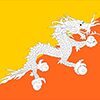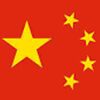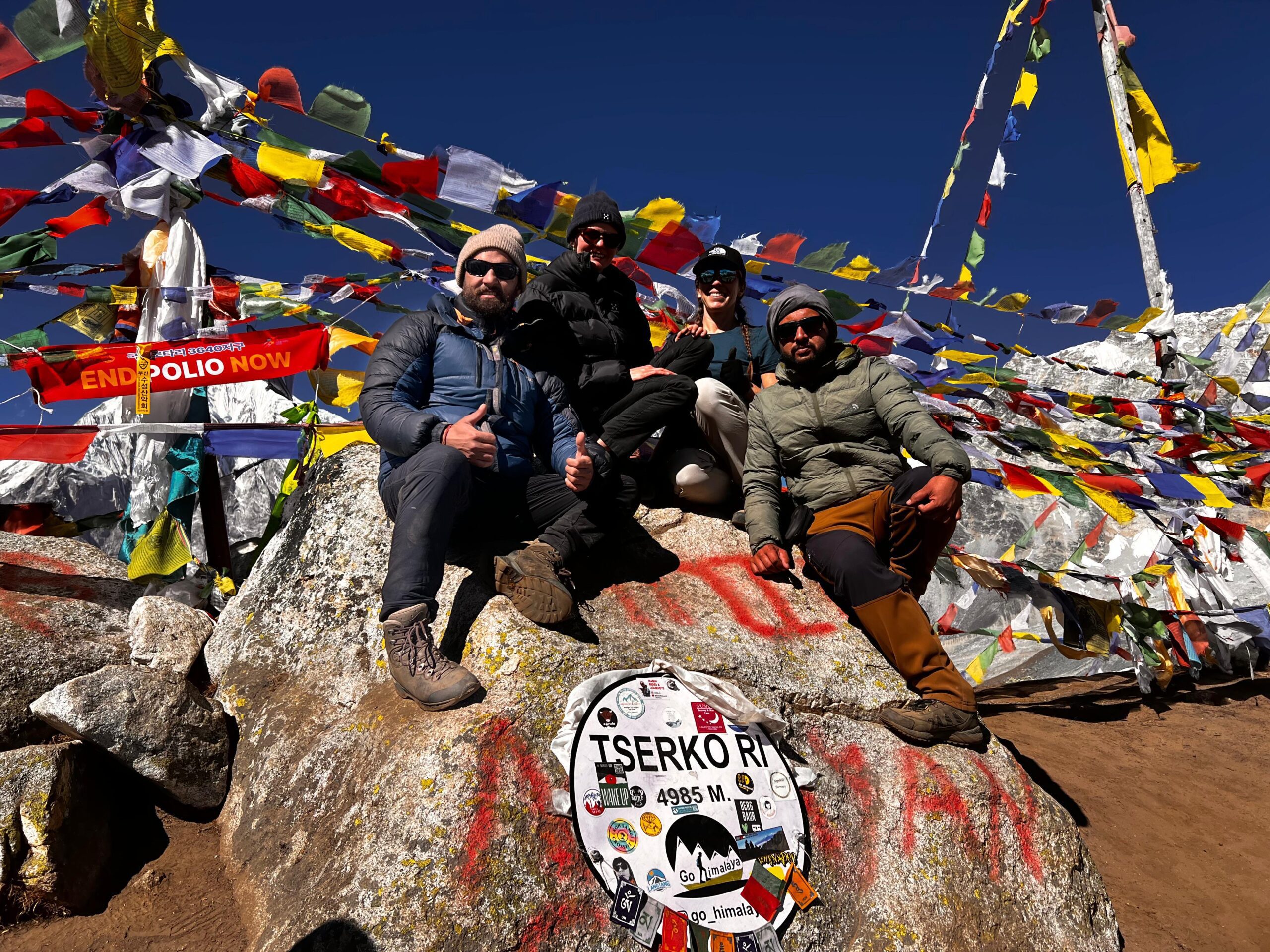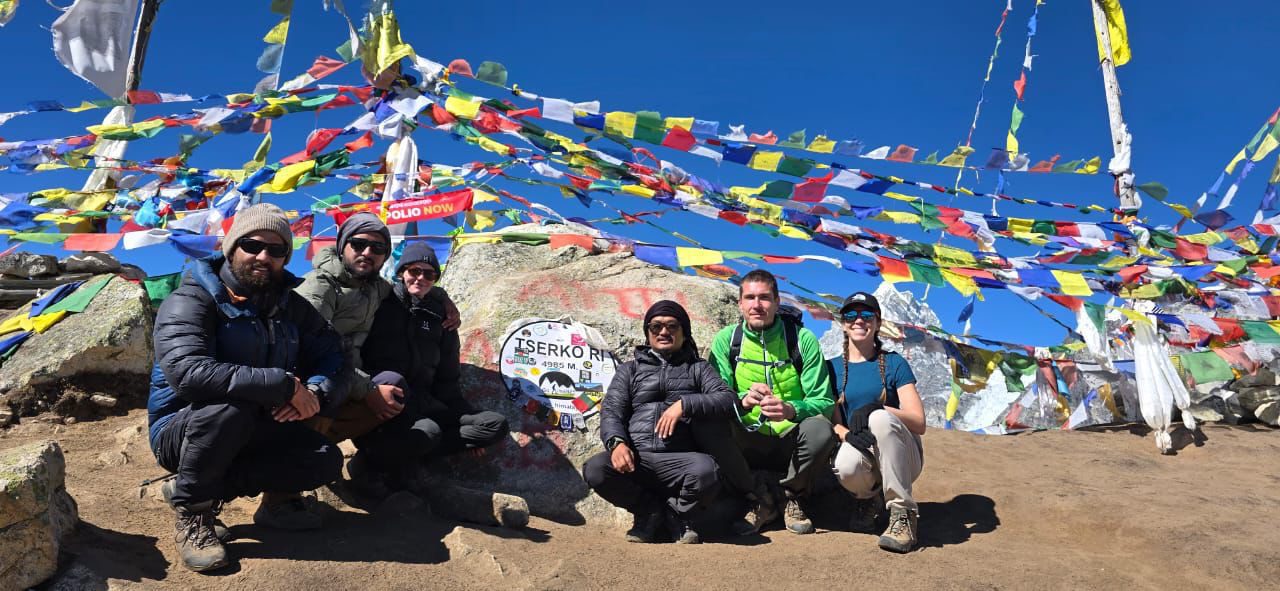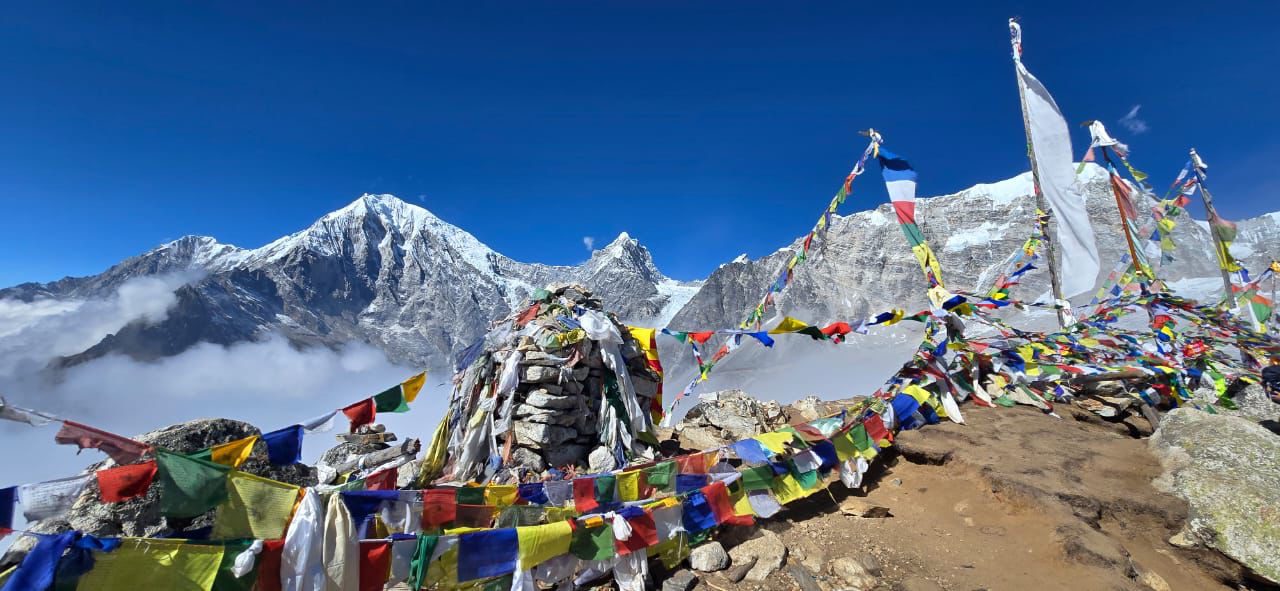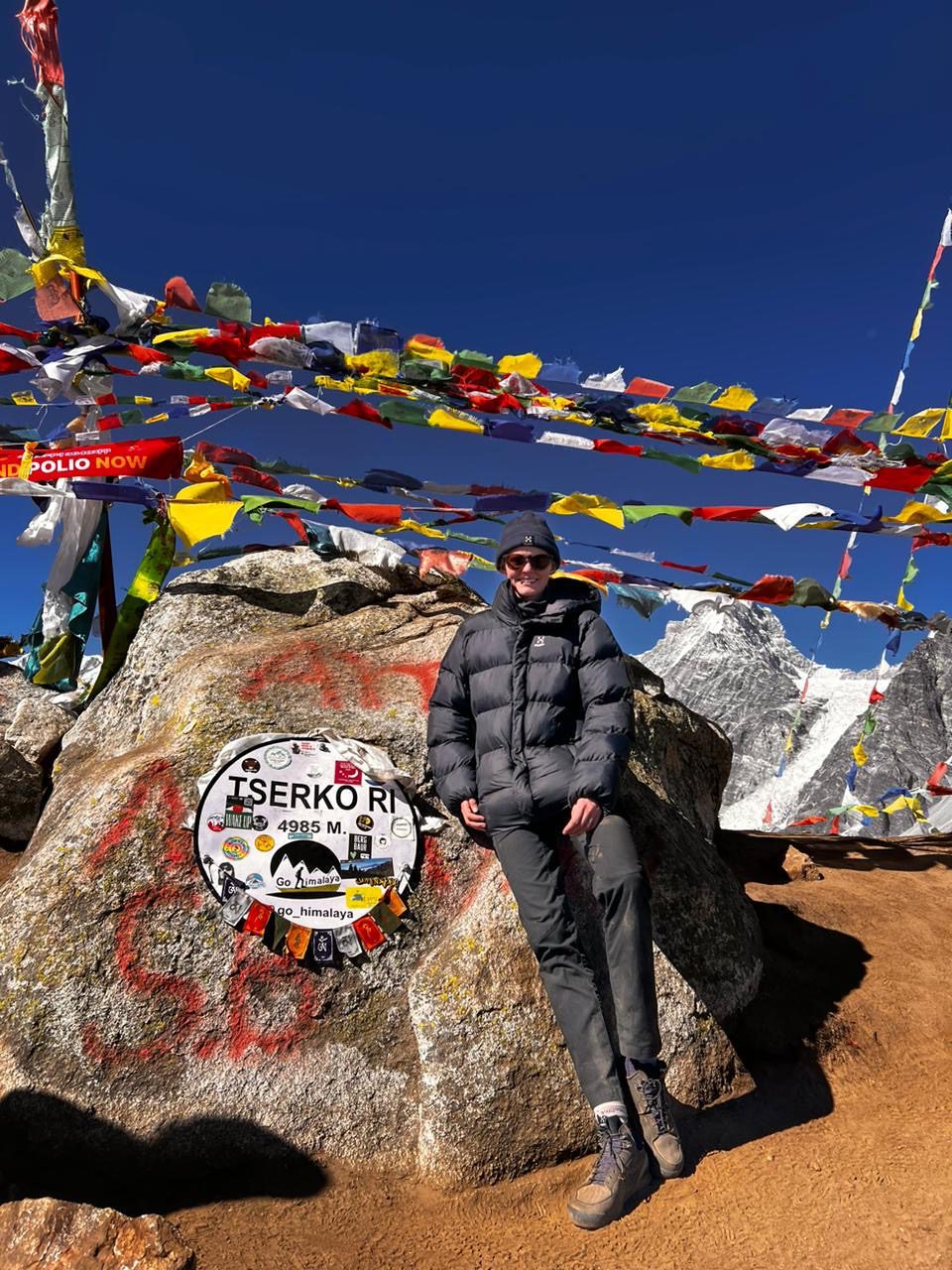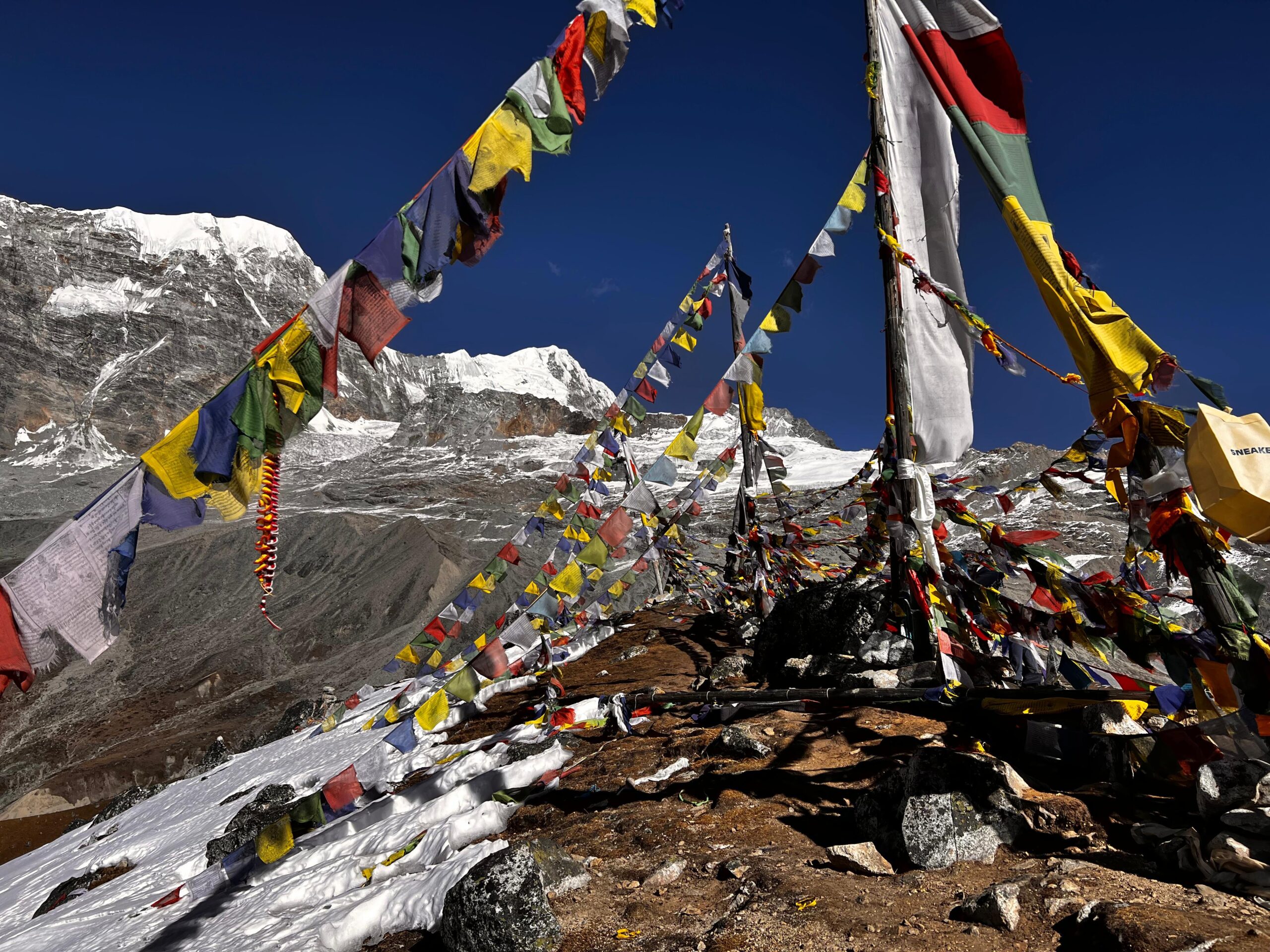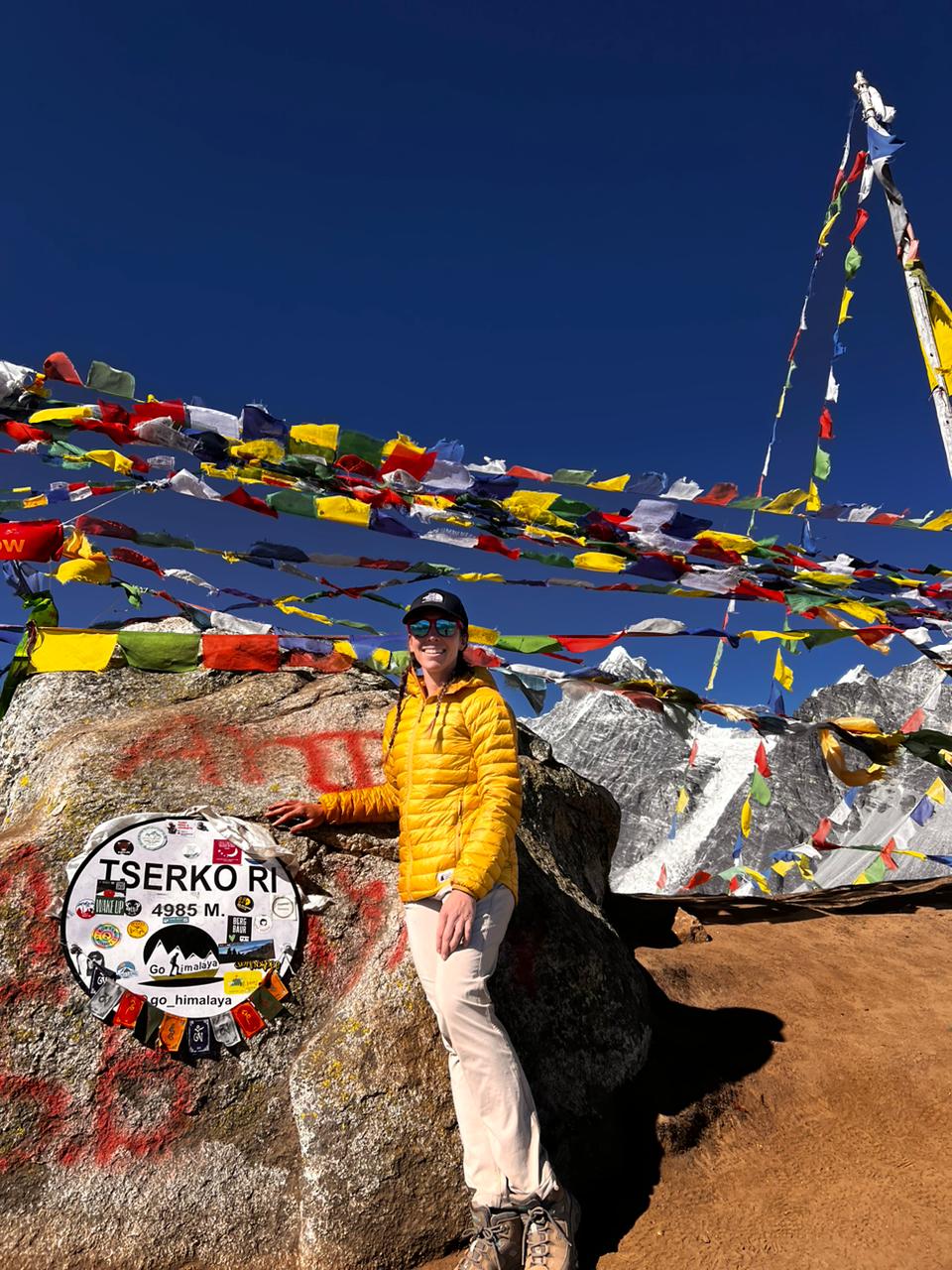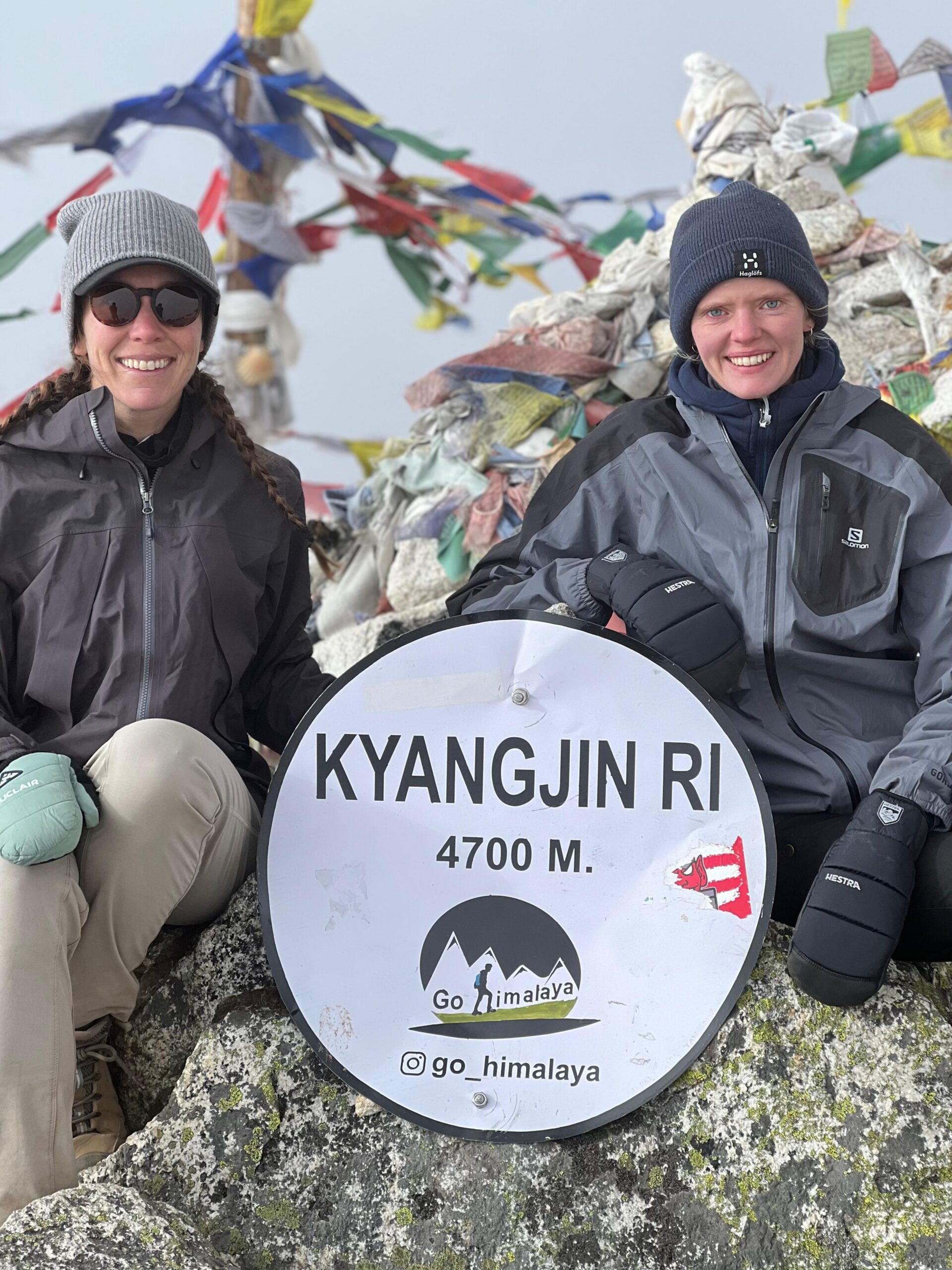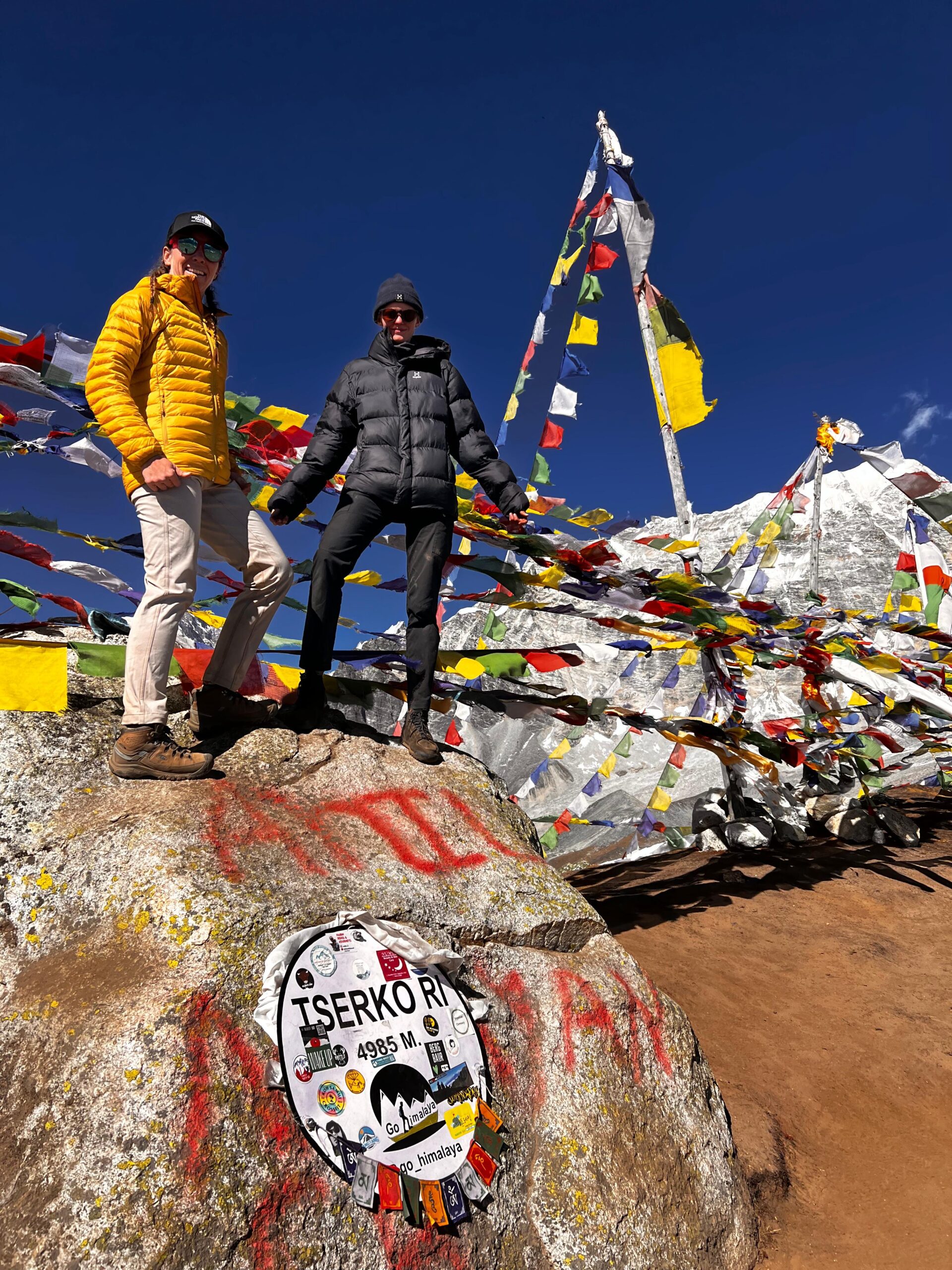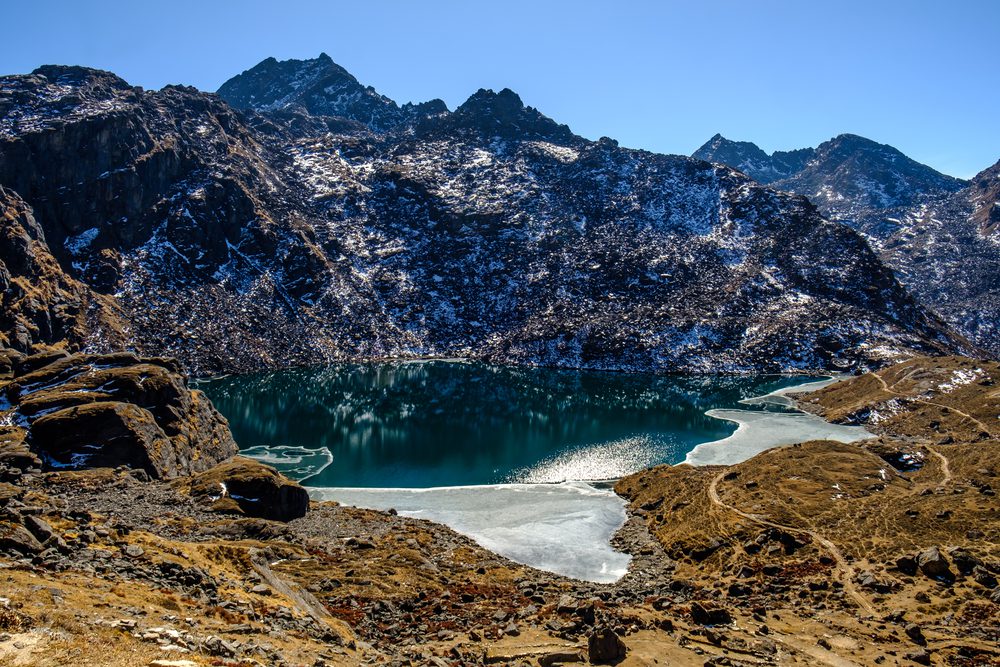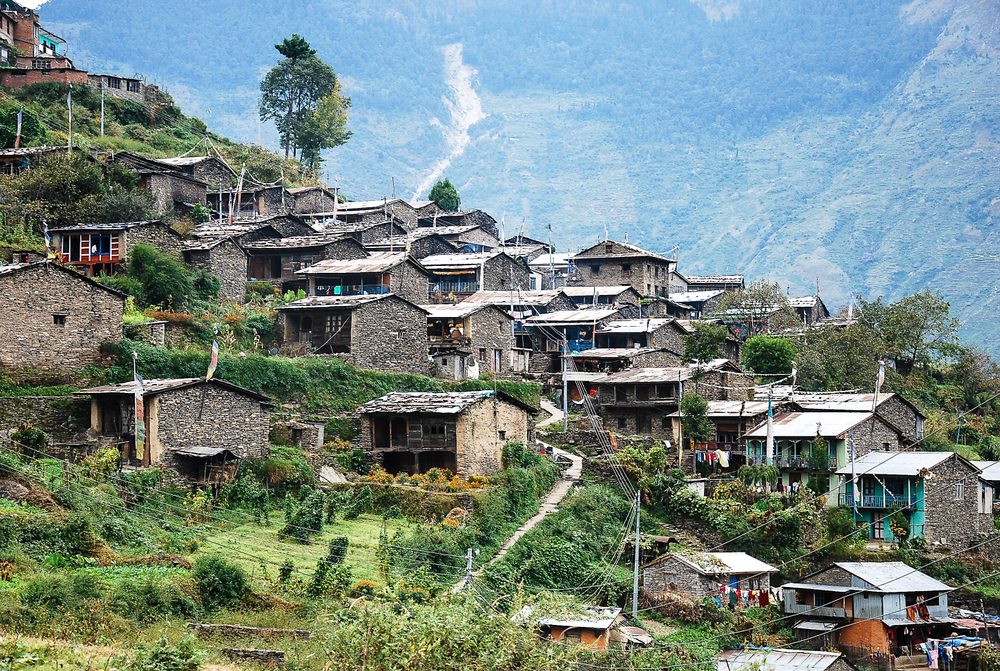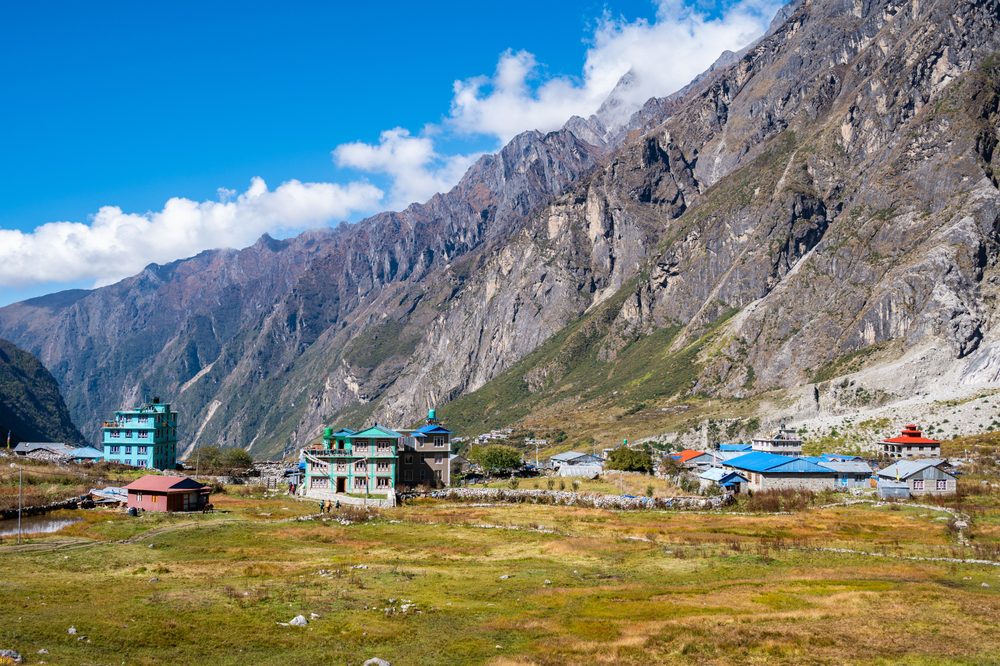8 Days 7 Nights Langtang Trek
5(22)
Trip Facts
Langtang Valley Trek Overview
The Langtang Valley Trek is one of Nepal’s most scenic and culturally enriching trekking experiences, located just north of Kathmandu in the Langtang region. Often referred to as the “Valley of Glaciers,” this trek provides an unbeatable blend of magnificent Himalayan landscapes and lush alpine meadows, forests, glacial rivers, and the traditional mountain villages all within the shortest time frame when compared with other high-altitude treks.
The journey starts with a picturesque drive to Kathmandu to Syabrubesi which is the point of departure on the trail. After that, the path is a solitary trek through the thick trees of pine, oak, and rhododendron forest in Langtang National Park, which is a protected area that is that is home to red pandas, Himalayan mountain black bears as well as a wide range of birds. On the way, hikers traverse suspension bridges, walk through flowing rivers, and walk through picturesque settlements that reflect the tranquil pace of life in rural Himalayan life. As you climb the mountain, it changes into alpine valleys that are open with a backdrop of imposing snow-capped peaks like Langtang Lirung (7,227m), Dorje Lakpa, Ganjala Peak as well as Langshisha Ridge. Every bend on the trail offers new views of beauty, from rhododendrons blooming in spring to ridgelines covered in snow in the late autumn. The hike ends in Kyanjin Gompa, which is a picturesque village at the foot of the Himalayas with stunning views of the mountains and access to the nearby viewpoints like Kyanjin Ridge as well as Tserko Ri.
One of the greatest advantages offered by the Langtang Valley Trek is its accessibility and versatility. This trek does not require any domestic flight, which makes it easier to afford and logistically easier. The trekkers can travel via the local jeep or the private bus according to their budget and ease of travel. It’s also a great option for those who have low fitness and is ideal for novices, families or people searching for an alternative that is more peaceful alternative in the direction of Everest and Annapurna. In only 7-10 days in just 7 to 10 days, you can be immersed in the diverse Himalayan ecosystems and take a journey into the deep-rooted mountain culture.
Trip Highlights
- Enjoy spectacular views of towering snow-capped peaks, including Langtang Lirung, Langtang Ri, Dorje Lakpa, Langshisha Ri, and Ganjala Peak.
- Challenge yourself with a rewarding climb to Tserko Ri (5,000m) and Kyanjin Ri (4,773m) for panoramic Himalayan views.
- Walk through beautiful rhododendron forests, especially vibrant during the spring bloom.
- Explore the natural beauty of Langtang National Park, home to diverse flora, fauna, and lush vegetation.
- Stay in cozy and traditional mountain teahouses, where you’ll experience local hospitality and cuisine.
- Immerse yourself in the rich Tibetan Buddhist culture of the region, visiting ancient monasteries like Langtang Gompa and Kyanjin Gompa.
- Connect with the friendly Tamang and Tibetan communities and experience their warm hospitality and unique traditions.
- Escape the crowds and enjoy the peaceful, less-traveled paths of one of Nepal’s hidden gem treks.
Langtang Trek Short Itinerary
Your Journey, Step by Step
Trek from Syabrubesi to Lama Hotel(2,470m)
Your real trek begins from Syabrubesi. Today, we will be crossing the Bhote Koshi River via a suspension bridge and continuing along the Langtang Khola. You will be accompanied by the amazing sound of the rushing river. As you ascend gradually, you’ll pass through quaint villages and possibly spot monkeys and birds along the way. This trail leads you to a tiny settlement dotted with bamboo.
After arriving at the Bamboo, we will finally head towards Lama Hotel(2,470m). It runs through a lush rhododendron forest. Passing through the forest, first we’ll reach Rimche and then Lama Hotel. The way from Rimche to Lama Hotel is usually less steep but continues through dense forest. This stretch takes 5 to 6 hours and offers a peaceful introduction to the mountain lifestyle.
Trek from Lama Hotel to Langtang Valley(3,430m)
Today’s trek takes you further into the heart of the Langtang Valley. The trail continues to ascend through delightful forests offering views of snow-covered peaks, particularly the majestic Langtang Lirung (7,227m). As you climb higher, the vegetation begins to lighten, and the landscapes become more alpine. The trail passes through Ghodatabela, an old horse stable.
Before continuing towards the rebuilt Langtang Village, Ghodatabela is a suitable place to have lunch and rest. This village, devastated by the 2015 earthquake, now stands as a symbol of resilience and strength, rebuilt by the community. You’ll stay overnight here, surrounded by mountain views and immersed in local Tibetan-influenced culture.
Trek Langtang village to Kyanjin Gompa(3,870m)
The trail from Langtang Village to Kyanjin Gompa is shorter but no less beautiful. You will hike by ice streams, yak pastures, and stone-built homes while admiring the towering Himalayan peaks. Then the trek passes by chortens, mani walls, and prayer flags. We’ll find very little vegetation here. The air grows thinner, and the landscape opens up as you approach Kyanjin Gompa.
Home to a famous Buddhist monastery and a government-operated cheese factory. Once you get there take the afternoon to explore the village, visit the monastery or just relax with warm tea and take in the views. Kyanjin Gompa is a great place to acclimatize and connect with the mountains. Accommodation in Kyanjin Gompa are basic lodges and guesthouses.
Day hiking to Kyanjin Ri and back to Kyanjin Gompa
Today is a rest and exploration day with a highly recommended side hike to Kyanjin Ri. This is one of the best views in the Langtang region, of Langtang Lirung, Dorje Lakpa, Langshisha Ri and many others. The climb is challenging due to the altitude but is rewarding at the same time.
As you climb up your step brings amaing views of the valley below. After reaching the summit take in the awe-inspiring Himalayan vistas, return to Kyanjin Gompa for another cozy evening in the mountains.
Trek from Kyanjin Gompa to Lama Hotel
After you’ve experienced the mountainous beauty of Kyanjin, it’s time to start your descent. We will step back along the trail to the Lama Hotel. As you descend, observe the shift in the scenery as alpine terrain changes to lush greenery. While it’s more difficult, the descent path reduces the effort, and there are ample opportunities to reflect on your experience to date.
The Langtang trail you’re familiar with offers an alternative view of the views you encountered while ascending and the descent in altitude will bring rejuvenation. The trail will take you to the Lama Hotel in the late afternoon, and then you will have a peaceful evening.
Trek from the Lama Hotel to Syabrubesi
Your final trekking day is a pleasant descent through the forested trails. you’ll reach there by backtracking the same route along the Langtang Khola. The path is gentle and enjoyable, allowing you to soak in the final views of the lush hills, river crossings, and friendly locals along the way. The trek typically takes around 5 to 6 hours that depend on your pace of walking.
As you return to Syabrubesi, you’ll have a chance to celebrate. This is the celebration of your trek completion. Then have a hearty meal and a warm bed in one of the local teahouses before going to bed.
Drive from Syabrubesi to Kathmandu by local bus or jeep
After breakfast, you’ll take the local bus or jeep for the return trip to Kathmandu. The journey takes the same route through villages, hills, and farms. Although the road can sometimes be bumpy, the varied landscape keeps it fascinating and gives you time to reflect upon the amazing adventures of the last week.
After arriving in Kathmandu, the driver will take you to your accommodation or hotel to mark the conclusion of your unforgettable Himalayan trip.
Customize this trip with help from our local travel specialist that matches your Interests.
Customize This TripLangtang Trek Inclusions
What’s Covered in Your Adventure
- Private Transportation: Pickup and drop-off by private vehicle.
- Meals: Three meals a day (Breakfast, Lunch, and Dinner) during the trek.
- Accommodation: Trekking lodge/tea house accommodations throughout the trek.
- Permits: Langtang National Park entry permit and Trekkers Information Management System (TIMS) permit.
- Transportation: Local bus/jeep from Kathmandu to Syabrubesi and back to Kathmandu.
- Government-licensed, experienced, helpful, knowledgeable, friendly, English-speaking guide.
- The guide’s salary, food, drinks, accommodation, transport, and insurance are covered.
- A Comprehensive first aid kit box will be available.
- Pulse oximeter to monitor oxygen saturation and heart rate (essential for detecting AMS symptoms)
- Arrangement of emergency helicopter evacuation service (to be claimed through your travel insurance).
- Trekking Equipment: Duffel bag for trekking (if needed).
- Taxes: All government taxes and official expenses included.
- International Flights: Airfare to and from Nepal
- Visa Fees (on arrival at Tribhuvan International Airport): 15 days: $25–$30 30 days: $40–$50 90 days: $100–$110
- All accommodations and meals in Kathmandu, before and after the journey.
- Personal expenses (shopping, snacks, boiled/bottled water, hot (tea, coffee) and cold drinks, hot shower, alcohol, Wi-Fi, telephone call, battery recharge fee), extra porters, etc.
- Personal trekking gear and equipment.
- Travel Insurance: Mandatory insurance covering emergency high-altitude rescue and evacuation.
- Tips for the trekking guide and porters.
- Any additional costs due to circumstances beyond our control, such as: Weather conditions, natural disasters (landslides, etc.), Changes in itinerary due to safety concerns or illness and Strikes or changes in government policies
- Any expenses not specifically mentioned in the "Cost Includes" section.
- One porter (shared by two people) available at $180 (max 25 kg total per porter).
Langtang Valley Trek Map
Navigate Your Journey
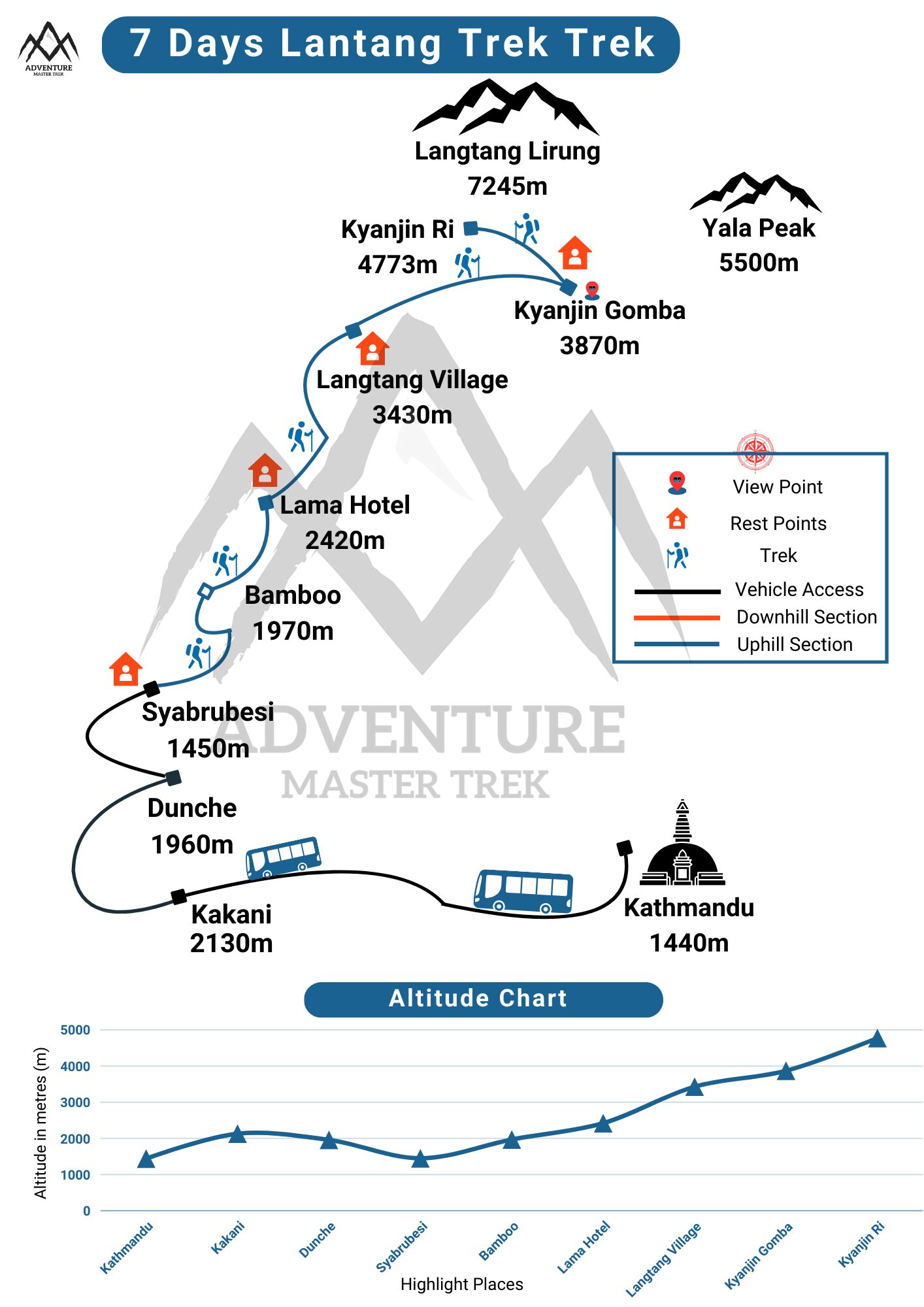
Good to Know
Your Journey, Step by Step
Accommodation and Food on the Langtang Valley Trek
While trekking in Langtang Valley you will be staying in lovely teahouses that are scattered all over the landscape. The main form of accommodation on Langtang Valley trek is teahouses. These family run lodges have simple twin rooms with shared facilities, $3-8 in lower regions and up to $15 near Kyanjin Gompa. A warm sleeping bag is a must as it gets cold at higher elevations.
The teahouse kitchens prepare different foods with both local and international options such as pasta, noodles, chowmein, pizza, sandwiches, soup, pancake, and thukpa. But I would recommend having nutritious local food like (dal vat ) popular organic, healthy dishes in the mountains for lunch and dinner.
You can start your day with hot porridge or Tibetan bread and fuel your afternoon with Dal Bhat (Nepal’s staple food) and in the evening you can have warm soup and stews. Expect to budget $4-8 per meal, with prices climbing alongside the altitude.
Drinking Water on Langtang
Electricity and Internet Connectivity during Langtang Trek
Despite being in a remote area, Langtang has surprising connectivity. Solar panels power most facilities, though service becomes more limited at higher elevations. Charging points exist in communal areas for a fee. Usually, it may cost $2 to $3 to charge your phone or camera.
It is highly recommended to pack a quality power bank to keep devices functioning throughout your journey. WiFi availability also varies from place to place. It may be stronger in larger villages and become spotty as you ascend. It may also require a certain charge to you.
Group Size for the Langtang Trek
With 6-10 people, you get the perfect social dynamic and personalised attention from guides. This size allows for teamwork on the trail and flexibility when needed. Smaller groups also mean better teahouse accommodations and less impact on the environment.
Environmentally speaking trekking in smaller groups is more sustainable as it reduces the load on local resources and minimizes the ecological footprint on the Himalayan ecosystem. Whether you’re a solo traveler joining a group or part of a small group of friends or family, this is safer, more enjoyable and more responsible way to trek.
Travel Insurance for the Langtang Valley Trek
High altitude trekking involves risks of altitude sickness, weather changes or sudden health issues, so travel insurance is not just recommended but often required for trekking in Nepal. In our 8-day Langtang Valley journey, you’ll gain significant elevation at various points along the route. So, it is not compulsory but recommended to take travel insurance with you.
Look for an insurance that covers medical emergencies and evacuation services. The best ones include helicopter rescue operations which are necessary in remote Himalayan regions where ground evacuation is not possible.
The cost of the insurance plan depends on a few factors, including:
- The maximum elevation covered
- The length of your trip
- Your age and health condition
- Additional coverage like trip cancellations or lost baggage
Langtang Trekking Permit
To trek in Langtang Valley in Nepal you need two permits:
Langtang National Park Entry Permit and Trekkers’ Information Management System (TIMS) Card.
Langtang National Park Permit
It is required to enter and trek inside the protected areas of the park which is rich in natural beauty and biodiversity. This permit costs NPR 3,000 for foreigners, NPR 1,500 for SAARC citizens and free for children under 10 years. It can be obtained at the Nepal Tourism Board office in Kathmandu or at entry points like Dhunche or Syabrubesi.
Trekkers’ Information Management System (TIMS) Card
TIMS Card is necessary for tracking and ensuring the safety of trekkers. TIMS Card costs NPR 2,000 for independent trekkers and NPR 1,000 if you are trekking through a registered agency. You can obtain a TIMS card from Nepal Tourism Board office in Kathmandu or Pokhara or through your trekking agency.
Both permits for the Langtang trek are mandatory and help support conservation and tourism management in the region. Be sure to carry your passport and passport-sized photos when applying.
Langtang Valley Trek Difficulty
The Langtang Valley Trek is considered a moderate trek in terms of difficulty. It is one of the most accessible Himalayan treks from Kathmandu and is suitable for both beginners and experienced trekkers.
However, there are a few key factors that determine the overall challenge level of the trek:
Elevation Gain
The trek starts at Syabrubesi (around 1,550 meters) and ascends gradually to Kyanjin Gompa (3,870 meters). If you hike further to Tserko Ri (around 5,000 meters) as a side trip, the altitude can present challenges like shortness of breath, fatigue, or mild altitude sickness. Proper acclimatization is crucial.
Trekking Hours and Trail Conditions
On average, you’ll walk 5–7 hours per day on well-established trails. The paths involve stone steps, forest trails, and steep sections, but no technical climbing is required. Some parts can be tiring, especially during continuous ascents.
Weather Conditions
Weather can affect difficulty. In winter, trails may be snowy and icy, while during monsoon season, they can be muddy and slippery. Spring and autumn offer the best conditions for smooth trekking.
Fitness Level
You don’t need to be a mountaineer, but a basic level of physical fitness is required. Regular walking or light cardio before the trek can help a lot. First-time trekkers can complete the route with proper preparation.
Langtang Trekking Cost 2025/26
Planning to trek Langtang Valley in 2025/26? The first thing to consider is the cost. Langtang Trek is one of the most affordable Himalayan treks in Nepal, offering stunning mountain views, Tamang culture and varied landscapes without the hefty price tag of Everest or Annapurna treks. Cost of the trek varies if you go solo or with a group, book through a trekking agency or manage everything yourself.
On average trekkers can spend from $500 to $900 per person depending on group size, duration and services included. Most packages cover permit, transportation, accommodation, meals and guide/porter services.
Essential Packing Guide for the Langtang Trek
General
- Backpack: 25- 35 L daypack with rain cover
- Duffle Bag: 50- 60L for porters (waterproof)
- Sleeping Bag: 3-season (-10°C comfort rating)
- Trekking Poles: Adjustable pair
- Water Bottles: 2L capacity (insulated recommended)
- Water Purification: Tablets/filter/straw
Documents
- TIMS card
- Langtang National Park permit
- Passport/ID copies
- Travel insurance docs
- Emergency contacts list
Upper Body
- Moisture-wicking thermal top (1-2)
- Fleece jacket/wool sweater
- Waterproof/windproof jacket
- 2-3 quick-dry T-shirts
Lower Body
- Thermal leggings (1 pair)
- 2 quick-dry trekking pants
- Waterproof Pants: 1 pair
- Shorts: 1 pair (optional for lower altitudes)
Hands
- Lightweight (1 pair)
- Insulated waterproof (1 pair)
Footwears
- Waterproof trekking boots (broken-in)
- Camp shoes/sandals
- 4-5 trekking socks + 1 thermal pair
- Gaiters (optional)
Undergarments
- Moisture-wicking underwear (4-5 pairs)
- Sports bras (for women, 2-3)
Medications & First Aid
- Diamox (for altitude sickness, consult doctor)
- Pain relievers (ibuprofen/paracetamol)
- Band-aids, antiseptic cream, blister treatment
- Oral rehydration salts (ORS)
- Personal prescriptions
- Wet wipes, hand sanitizer
Protection & Extras
- Sunglasses (UV 400)
- Sunscreen (SPF 50+) and lip balm
- Warm Hat & Bandana/Buff
- Earplugs (for teahouse stays)
- Camera/Phone with extra batteries/power bank
- Snacks: Energy bars, nuts, chocolate
- Biodegradable soap, toothbrush, and toothpaste
Optional Items
- Lightweight book/journal
- Playing cards/small games
- Trekking umbrella (for rain/sun)
- Portable solar charger
- Toilet paper (small roll)
Cancellation Policy for Langtang Trek
We understand that unforeseen situations may require trip cancellations. Below is our cancellation policy for the Langtang Trek:
1. Cancellation by the Guest
- 30 days before departure: Full refund (except bank transfer fee)
- 10 days before departure: 30% refund of the total trip cost
- Less than 5 days before departure: 50% refund of the total trip cost
- If you postpone your trip at the last minute: No extra charge or postponement cost
- After the trek begins: No refund will be made for any reason (e.g., personal illness, injury, or early return)
2. Cancellation by the Company
If we cancel the trek due to political instability, natural disasters, or unforeseen circumstances, you can choose to:
- Receive a full refund of the trip cost
- Reschedule your trek to a later date
3. Cancellation Due to Weather or Flight Delays
- If your Lukla flight is canceled or delayed due to bad weather:
- We will try to reschedule your trek at no extra cost
- We may change your trekking region as per your convenience
- If you decide to cancel: A full refund will be provided, excluding service fees (permits, hotel bookings, transportation), which is 30% of your trip cost
4. No-Show Policy
- If a guest fails to show up on the scheduled departure date without prior notice, no refund will be issued
5. Travel Insurance Requirement
We strongly recommend comprehensive travel insurance that covers trip cancellations, medical emergencies, evacuation, and high-altitude risks.
Booking Policy for Langtang Trek
We aim to make the booking process smooth and flexible for our guests. Below are the details of our booking policy:
1. Advance Payment & Booking Confirmation
- A 30% advance deposit of the total trip cost is required to confirm your booking
- The remaining balance can be paid upon arrival in Kathmandu before the trek begins
- You may also choose to pay the full amount in advance if preferred
- To proceed with the booking, please send:
- The booking amount
- A soft copy of your passport
- Additional details (emergency contact, travel insurance info, etc.)
2. Payment Methods
We offer multiple payment options for your convenience:
- Online Payment: Secure payment through our website’s gateway
- Credit/Debit Cards: Visa, MasterCard, etc. (4% bank service charge applies)
- Wire/Bank Transfers: Direct transfer to our bank account (transaction fees applicable)
- Cash or Cheque: Accepted in Kathmandu
3. Final Payment
- The remaining 70% of the trip cost must be paid before departure
- Payment can be made in cash, card, or bank transfer upon arrival
4. Booking Modifications & Rescheduling
- If you need to change your trek date, please inform us at least 30 days in advance
- Date changes are subject to availability and additional costs, depending on the situation
5. Travel Insurance Requirement
- All trekkers must have comprehensive travel insurance covering high-altitude medical emergencies, evacuation, cancellations, and delays
6. Last-Minute Booking
- We accept last-minute bookings (up to 48 hours before departure) but availability cannot be guaranteed.
FAQs
Your Questions, Answered
How difficult is the Langtang Trek?
The Langtang trek is rated as moderate. While it doesn’t require technical climbing, trekkers should be prepared for long walking hours, steep ascents, and high altitude. A decent level of fitness is necessary.
What is the highest point of the Langtang Valley Trek?
The highest point most trekkers reach is Tserko Ri (5,000 meters/16,404 feet). It offers panoramic views of the Langtang Himalayan range and is often done as a day hike from Kyanjin Gompa.
Do I need a guide for the Langtang Trek?
A guide is not mandatory but is highly recommended, especially after the Nepal Tourism Board enforced stricter rules in some regions. Guides enhance safety, provide cultural insights, and support the local economy. Adventure Master Trek provides experienced guide who can assist you to your journey.
What permits are required?
Trekkers need two permits:
- Langtang National Park Entry Permit (~NPR 3,000 for foreigners)
- TIMS Card (~NPR 1,000 for group trekkers or NPR 2,000 for solo trekkers)
When is the best time to trek in Langtang?
The best time is Spring (March–May) and Autumn (September–November) when the skies are clear, the weather is stable, and the mountain views are spectacular.
Can I do the Langtang Trek in winter?
Yes, trekking in winter (December–February) is possible, but you must prepare for cold temperatures and occasional snowfall. The views are often stunning, and the trail is quieter.
Are there teahouses along the trail?
Yes, there are well-established teahouses in every village along the route. They offer basic lodging and meals, making it easy to trek without carrying tents or food.
How much does the trek cost?
Budget travelers can expect to spend $25–$40 per day, including food, lodging, and permits. If you hire a guide and porter or go through an agency, the total cost may range from $400 to $800+.
Is altitude sickness a concern?
Yes. Although the trek doesn’t reach extreme altitudes, altitude sickness can occur above 3,000 meters. It’s important to ascend gradually, stay hydrated, and avoid rushing.
Are there ATMs or internet on the trail?
There are no ATMs beyond Syabrubesi, so bring enough cash. Some teahouses offer Wi-Fi for a fee, but the connection may be slow or unreliable.
Is the Langtang Valley safe?
Yes, it’s generally considered safe for trekkers. The trail is well-traveled, and the local communities are friendly. Always check weather and trail conditions before departing.
Can I combine Langtang with other treks?
Yes, Langtang can be combined with Gosaikunda Lake and Helambu for a longer adventure. These routes connect through Laurebina Pass.
What should I pack for the Langtang trek?
Essentials include warm layers, a good sleeping bag, rain gear, trekking boots, a water bottle with a filter, sun protection, and basic first aid.
Is prior trekking experience necessary?
First-time trekkers with good fitness can handle Langtang, but doing a few hikes before arriving will improve your experience.
What kind of food is available?
Typical teahouse menus include dal bhat (rice, lentils, and curry), noodles, pasta, pancakes, momos (dumplings), tea, and coffee. Food is vegetarian-friendly.
Can I charge my devices along the trek?
Yes, most teahouses offer device charging for a small fee. Carry a power bank as backup, especially in colder seasons when solar power is less reliable.
Is travel insurance required?
It’s strongly recommended. Make sure your policy covers high-altitude trekking and emergency helicopter evacuation, which may be needed in case of AMS.
Can I do the Langtang trek solo?
Yes, solo trekking is allowed, but check for current regulations, especially after recent policy shifts. It’s safer to inform someone of your plans or hire a guide from a reputable operator if you’re unfamiliar with the terrain.
Is Langtang Valley crowded?
Langtang is less crowded than Everest or Annapurna, making it a great option for trekkers looking for peace, solitude, and a more authentic cultural experience.
View Our Similar Packages
Discover our top tours, loved by thousands of travelers annually. Choose the adventure that inspires you and embark on a journey tailored to your desires.







